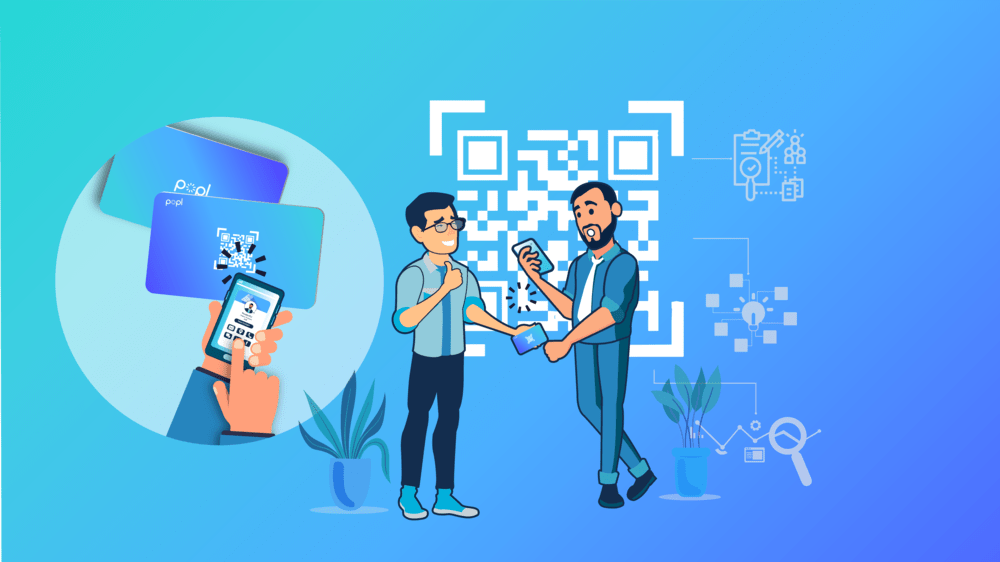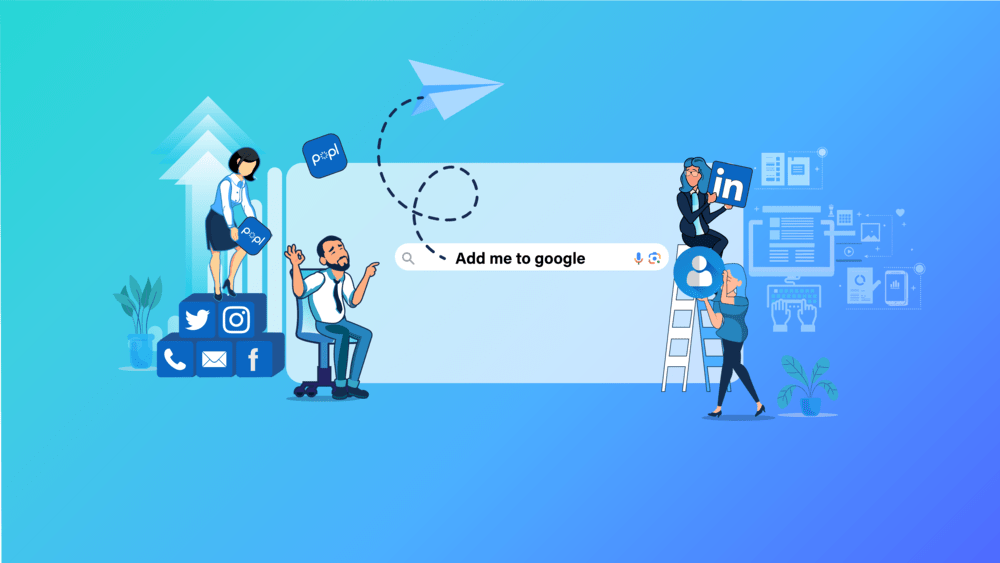QR codes have emerged as a powerful tool in modern marketing, bridging the gap between offline and online experiences. By simply scanning a QR code with a smartphone, users can access a wealth of information, promotions, and interactive content.
Over the years, various brands have successfully leveraged QR codes to enhance customer engagement, drive sales, and provide added value.
This discussion explores notable QR code marketing campaigns and success stories, highlighting their impact and effectiveness.
Additionally, we will delve into future trends in QR code technology, outlining how advancements will continue to shape the landscape of digital marketing and customer interaction.
What Does QR Stand For
QR stands for Quick Response. This name perfectly captures the essence of what QR codes are designed to do: provide immediate access to information with a simple scan.
In the modern digital landscape, where speed and convenience are paramount, QR codes offer an efficient way to bridge the gap between offline and online worlds. By scanning a QR code with a smartphone, users can instantly access websites, contact details, social media profiles, or any other digital content the code is linked to.
This makes QR codes an invaluable tool for businesses and individuals looking to streamline interactions and enhance accessibility.
The History of QR Codes
The journey of QR codes began in Japan in 1994, when they were invented by Denso Wave, a subsidiary of Toyota. Initially, QR codes were developed to track vehicles and parts during the manufacturing process, offering a more robust and versatile solution compared to traditional barcodes.
Unlike standard barcodes, which can only store data horizontally, QR codes can store data both horizontally and vertically, significantly increasing their storage capacity.
The adoption of QR codes spread rapidly across various industries. In retail, they revolutionized inventory management by allowing for more detailed tracking of products. The healthcare sector utilized QR codes for patient management and medication tracking.
Eventually, the marketing and advertising industries recognized the potential of QR codes to create interactive and engaging campaigns. The ability to encode URLs, contact information, and multimedia content made QR codes an attractive option for businesses looking to connect with their audience in innovative ways.
The advent of smartphones equipped with cameras and internet connectivity further propelled the popularity of QR codes. By the early 2010s, QR codes had become a global phenomenon, appearing on everything from product packaging to billboards.
Today, they are an integral part of digital business card services, offering a seamless way to share contact details and other essential information.
Understanding QR Codes
At their core, QR codes are two-dimensional barcodes that can be read by devices such as smartphones and scanners. They consist of black squares arranged on a white background, each square representing a specific piece of information.
The pattern of these squares encodes data in a way that can be quickly and accurately interpreted by QR code readers.
The structure of a QR code includes several key components:
- Finder Patterns: These are the large squares located at three corners of the QR code, allowing the scanner to detect the code's orientation.
- Alignment Patterns: These smaller squares help correct distortion and ensure accurate reading of the code, even if it is scanned at an angle.
- Timing Patterns: These alternating black and white modules along the QR code's border synchronize the scanner for accurate data capture.
- Data and Error Correction Areas: These sections store the encoded information and contain error correction codes that help recover data if the QR code is damaged or partially obscured.
QR codes can store various types of data, including URLs, plain text, email addresses, and phone numbers. The versatility and robustness of QR codes make them ideal for a wide range of applications, from digital business card services to marketing campaigns and beyond.

The Rise of QR Code Business Cards
As digital transformation continues to reshape how professionals connect and share information, QR code business cards have emerged as a modern alternative to traditional paper cards. These digital business card services integrate QR codes to facilitate seamless sharing of contact details, social media profiles, and other relevant information.
QR codes have demonstrated remarkable versatility, particularly when used in promotional materials. For businesses looking to modernize their marketing strategies, incorporating a QR code on flyers can significantly enhance customer engagement and provide easy access to digital content straight from print media. This integration allows marketers to track campaign success accurately while offering seamless user experiences, making it easier for businesses to align their offline marketing strategies with online content.
The benefits of QR code business cards are manifold:
- Convenience: Users can share their contact information with a simple scan, eliminating the need to manually input details.
- Environmental Friendliness: Digital business cards reduce paper waste, aligning with sustainable practices.
- Interactivity: QR codes can link to multimedia content, such as videos or presentations, providing a richer experience for recipients.
- Ease of Updates: Unlike paper cards, digital business cards can be easily updated, ensuring that recipients always have access to the latest information.
Case Study: Digital Business Cards in Action
Consider the example of Popl, a company offering digital business card services. By incorporating QR codes into their digital business cards, Popl has enabled professionals to share their contact information instantly and effortlessly.
Users can customize their QR codes to include their company logo, adjust the color scheme, and even add a call-to-action, prompting recipients to scan the code.
Popl's digital business cards have proven to be a valuable networking tool across various industries. Sales professionals, for instance, have reported increased engagement and lead generation by using these digital cards at networking events and conferences.
The ability to provide a direct link to their LinkedIn profiles, company websites, or promotional videos has helped them stand out and make lasting impressions.
How QR Codes Work
At their core, QR codes (Quick Response codes) are two-dimensional barcodes that store information both horizontally and vertically. This dual-directional storage allows QR codes to hold a significant amount of data compared to traditional barcodes.
But how exactly do they work?
Scanning and Decoding
When you scan a QR code using a smartphone or a dedicated QR code scanner, the device's camera captures the image of the QR code. The scanner software then decodes the pattern of black and white squares, translating it into readable data. This data can be a URL, contact information, plain text, or any other type of encoded content.
The Versatility of QR Codes
QR codes can store various types of information:
- URLs: Direct users to websites or specific web pages.
- Contact Information: Store details like name, phone number, email address, and more.
- Text: Display plain text messages.
- Email: Automatically compose an email with pre-filled recipient and message fields.
- Phone Numbers: Dial a number instantly.
- SMS: Send a pre-written text message.
This versatility makes QR codes a powerful tool for businesses, enabling seamless integration with digital business card services, marketing campaigns, and other applications.
Benefits of Using QR Codes
QR codes offer numerous advantages for businesses and individuals. Their ability to bridge the gap between the physical and digital worlds makes them an invaluable tool in various scenarios.
Here are some of the key benefits of using QR codes:
Easy Access to Information
QR codes provide a quick and effortless way for customers to access information. By simply scanning a code with their smartphone, users can instantly visit a website, download an app, or view a digital menu without having to type in a web address or search for information manually.
Increased Engagement
QR codes can be used to drive customer engagement.
For example, businesses can offer exclusive discounts or promotions to customers who scan a QR code, fostering brand loyalty and encouraging repeat business.
Additionally, QR codes can link to interactive content, such as videos or quizzes, making the customer experience more engaging.
Contactless Transactions
In the wake of the COVID-19 pandemic, contactless solutions have become increasingly important. QR codes enable contactless transactions, such as mobile payments, providing a safer and more convenient experience for customers.
This has been particularly popular in countries like China, where QR code-based payment systems like Alipay and WeChat Pay are widely used.
Tracking and Analytics
QR codes can be tracked to measure customer engagement and the effectiveness of marketing campaigns. By analyzing the number of scans and the actions taken afterward, businesses can gain valuable insights into customer behavior. This data can be used to optimize marketing strategies and improve overall campaign performance.
Cost-Effective Marketing
Creating and deploying QR codes is relatively inexpensive. They can be printed on a variety of materials, such as business cards, flyers, posters, and product packaging, without requiring any additional hardware or software.
This makes QR codes a cost-effective solution for businesses looking to enhance their marketing efforts.
Enhanced Customer Experience
QR codes can significantly improve the customer experience by providing a more interactive and engaging way to access information.
For example, digital business cards with QR codes allow recipients to instantly save contact details to their phone, eliminating the need for manual input. Restaurants can use QR codes on digital menus, enabling customers to easily access the menu and place orders from their smartphones.
Data Collection
QR codes can be used to collect customer data, such as email addresses or phone numbers. This information can be valuable for building a customer database and driving future marketing campaigns.
By offering incentives for scanning a QR code, businesses can encourage customers to share their information willingly.
Easy Updates
One of the significant advantages of QR codes is their ability to be updated without changing the physical code. If a business changes its website address or adds new services, the QR code can be updated to reflect the new information.
This flexibility ensures that customers always have access to the most current information.
Moreover, innovative uses for QR codes extend beyond business applications, right into the comforts of home. Whether you want to streamline organization or create an interactive household experience, exploring different QR Code ideas can transform your usage of this technology within a domestic setting. Think unique ways like WiFi sharing or enhancing personal storage – possibilities fit any lifestyle.

Common Uses and Applications of QR Codes
QR codes have become increasingly popular due to their versatility and ease of use. Here are some common uses and applications across various industries:
1. Marketing and Advertising
- Promotional Campaigns: QR codes are often used in marketing materials like posters, flyers, and product packaging to direct customers to landing pages with detailed product information, videos, or special offers.
- Social Media Engagement: Brands use QR codes to link directly to their social media profiles, encouraging customers to follow and engage with them online.
- Coupons and Discounts: Businesses can offer exclusive coupons and discounts via QR codes, which can be scanned to redeem in-store or online.
2. Product Tracking and Authentication
- Supply Chain Management: QR codes can be used to track products throughout the supply chain, ensuring authenticity and providing real-time updates on the product's status.
- Counterfeit Prevention: By scanning a QR code, customers can verify the authenticity of a product, protecting against counterfeit goods.
3. Payment and Checkout
- Contactless Payments: QR codes facilitate contactless payments, allowing customers to pay for goods and services using mobile payment apps or digital wallets.
- Invoicing and Billing: Businesses can include QR codes on invoices, making it easy for customers to scan and pay bills instantly.
4. Event Management
- Ticketing and Registration: QR codes simplify event check-ins by allowing attendees to scan their tickets for quick entry. They can also access event schedules and other information.
- Networking: Professionals use digital business cards with QR codes at events to share their contact information instantly.
5. Customer Feedback and Surveys
- Feedback Collection: Businesses use QR codes to link to feedback forms or surveys, making it easy for customers to provide valuable insights.
- Review Requests: QR codes can direct customers to review sites, encouraging them to leave positive feedback.
6. Loyalty Programs
- Reward Systems: QR codes enable digital loyalty programs where customers can scan codes to earn rewards or points.
- Membership Verification: Businesses can use QR codes to verify membership status and track customer purchases.
7. Educational Purposes
- E-Learning: Educators use QR codes to link to additional learning resources, videos, and interactive content.
- Library Systems: Libraries use QR codes to provide information about books, including reviews and availability.
8. Healthcare
- Patient Management: QR codes on patient wristbands store critical information that can be quickly accessed by healthcare providers.
- Medication Tracking: Pharmacies use QR codes to provide detailed information about medications, including dosage instructions and potential side effects.
QR Code Generators and Scanners
To effectively implement QR codes, you need reliable QR code generators and scanners. Here are some popular options:
QR Code Generators
-
Popl QR Code Generator
- Features: Customizable QR codes with options to add logos, change colors, and link to various destinations like websites, social media profiles, and digital business cards.
- Usage: Ideal for creating professional QR codes for business cards, marketing materials, and more.
- Website: Popl QR Code Generator
-
QR Code Monkey
- Features: Free QR code generator with customization options including colors, logos, and design elements.
- Usage: Suitable for personal and business use, offering high-resolution QR codes for print and digital media.
- Website: QR Code Monkey
-
QRCode Generator
- Features: Simple and user-friendly interface for generating QR codes with options for URLs, text, email, phone numbers, and more.
- Usage: Good for quick and straightforward QR code creation.
- Website: QRCode Generator
QR Code Scanners
-
QR Code Reader by Scan
- Features: Fast and reliable QR code scanning with support for URLs, contact information, and other data types.
- Platforms: Available for iOS and Android.
- Usage: Suitable for everyday use and business applications.
-
NeoReader
- Features: Versatile QR code scanner that reads a variety of barcode formats, including QR codes, Data Matrix, and PDF 417.
- Platforms: Available for iOS, Android, and Windows Phone.
- Usage: Ideal for both personal and professional use, offering comprehensive scanning capabilities.
-
QR & Barcode Scanner by Gamma Play
- Features: Simple and efficient scanner with a focus on speed and ease of use. Supports scanning of QR codes and barcodes.
- Platforms: Available for iOS and Android.
- Usage: Good for quick scanning in retail, marketing, and other applications.
Best Practices for Creating Effective QR Codes
Creating effective QR codes requires attention to design, placement, and functionality to ensure they provide a seamless and valuable experience for users. Here are some best practices:
1. Ensure Clear Visibility and Accessibility
- Size Matters: Ensure your QR code is large enough to be easily scanned. Typically, a minimum size of 1 x 1 inch (2.5 x 2.5 cm) is recommended.
- High Contrast: Use high contrast between the QR code and its background. Black codes on white backgrounds are most effective.
- Avoid Clutter: Place the QR code in an area free from visual clutter. This makes it easier for users to locate and scan the code.
2. Provide Clear Instructions
- Call to Action: Include a brief call to action near the QR code, such as “Scan to get a discount” or “Scan to view our menu.” This informs users what to expect when they scan the code.
- Usage Instructions: If targeting an audience unfamiliar with QR codes, provide simple instructions on how to scan them.
3. Optimize for Mobile Devices
- Mobile-Friendly Content: Ensure the content linked to the QR code is mobile-optimized. Websites, videos, and other content should load quickly and be easy to navigate on smartphones.
- Fast Load Times: Make sure the landing pages load quickly to avoid frustrating users and losing engagement.
4. Test Before Deployment
- Cross-Device Testing: Test the QR code with multiple devices and scanning apps to ensure compatibility and functionality.
- Environmental Testing: Scan the QR code under different lighting conditions and from various angles to ensure it is easily scannable.
5. Incorporate Branding Elements
- Custom Designs: Customize your QR code to include brand colors and logos, making it visually appealing and aligned with your brand identity.
- Maintain Functionality: Ensure customization does not compromise the code’s readability. Avoid altering the essential parts of the QR code.
6. Provide Value to Users
- Relevant Content: Link to content that provides real value to users, such as exclusive discounts, useful information, or engaging multimedia.
- Avoid Redundancy: Do not use QR codes for information that is easily accessible or can be conveyed through simpler means.
QR Code Tracking, Analytics, and Security Considerations
Tracking and Analytics
Tracking the performance of your QR codes is crucial for understanding user engagement and optimizing your campaigns. Here’s how you can effectively track and analyze QR code usage:
-
Use a QR Code Generator with Analytics
- Choose a QR code generator that offers built-in analytics, such as the Popl QR Code Generator. These tools provide detailed reports on scan frequency, location, device type, and more.
-
Monitor Key Metrics
- Number of Scans: Track how many times your QR code is scanned to measure engagement.
- Scan Location: Identify where scans are taking place to understand geographic engagement.
- Device Type: Determine which devices are being used to scan your QR code for better optimization.
- Time of Day: Analyze when scans occur to optimize the timing of your campaigns.
-
Integrate with Web Analytics
- Use UTM parameters in the URLs linked to your QR codes to track performance in Google Analytics or other web analytics tools. This helps in measuring the effectiveness of specific campaigns and QR codes.
-
A/B Testing
- Conduct A/B testing with different QR code designs, placements, and calls to action to determine what works best for your audience.
Security Considerations
Security is an essential aspect of using QR codes, as they can potentially expose users to malicious content. Here are some security best practices:
-
Use Secure URLs
- Always link QR codes to secure (HTTPS) URLs to protect user data and provide a safe browsing experience.
-
Validate Content
- Regularly check the content linked to your QR codes to ensure it has not been tampered with or replaced by malicious content.
-
Educate Users
- Inform users about the risks associated with scanning unknown QR codes and encourage them to use trusted QR code scanning apps that can detect malicious links.
-
Dynamic QR Codes
- Use dynamic QR codes that allow you to change the destination URL without altering the physical code. This helps in quickly addressing any security issues by redirecting to safe content.
-
Regular Monitoring
- Continuously monitor the performance and integrity of your QR codes. Set up alerts for unusual activity or spikes in scans that could indicate misuse.

QR Code Marketing Campaigns and Success Stories
QR codes have been successfully integrated into various marketing campaigns across industries, leading to increased customer engagement and sales. Here are some notable success stories:
1. Adidas: Limited-Edition Shoe Sales via QR Codes
- Campaign Details: Adidas placed QR codes on their billboards that allowed users to purchase limited-edition shoes directly through their mobile phones.
- Outcome: This innovative approach not only increased sales but also enhanced the brand's image as a tech-savvy and customer-centric company. The convenience of immediate purchase through QR codes drove significant consumer engagement.
2. McDonald's Brazil: Drive-Thru Cup Campaign
- Campaign Details: McDonald's Brazil used QR codes on their drive-thru cups, enabling customers to access exclusive content, promotions, and games while waiting for their food.
- Outcome: This campaign boosted customer engagement and provided an interactive experience, making the wait time more enjoyable. It also helped in promoting McDonald’s app and services, leading to increased app downloads and customer retention.
3. Heinz: Talking Label Campaign
- Campaign Details: Heinz used QR codes on ketchup bottles to provide customers with recipe ideas and cooking tips.
- Outcome: This campaign added value to Heinz's products by offering useful content, thereby enhancing customer experience and fostering brand loyalty. The interactive nature of the campaign also encouraged customers to engage more deeply with the brand.
4. National Geographic: Expanding Magazine Content
- Campaign Details: National Geographic integrated QR codes in their magazines, linking to additional content such as videos and interactive features.
- Outcome: This approach enriched the reading experience, providing readers with more in-depth information and multimedia content. It also increased traffic to National Geographic's digital platforms, enhancing overall brand engagement.
5. Starbucks: Mobile Payments and Card Reloads
- Campaign Details: Starbucks utilized QR codes to allow customers to reload their Starbucks card and make payments directly from their smartphones.
- Outcome: This convenience led to increased customer satisfaction and streamlined the payment process, making it easier for customers to complete transactions and encouraging repeat purchases.
6. IKEA: Product Information and Direct Purchases
- Campaign Details: IKEA incorporated QR codes in their catalogs, providing customers with detailed product information and enabling direct purchases from the catalog.
- Outcome: This seamless integration of offline and online shopping experiences enhanced customer convenience and drove sales. It also allowed IKEA to provide rich, interactive content, making the shopping experience more engaging.
Future Trends in QR Code Technology
As technology continues to evolve, QR codes are expected to integrate more advanced features, enhancing their utility and application. Here are some future trends to watch:
1. Personalized QR Experiences
- Customization: QR codes will become more personalized, offering content tailored to individual user preferences and behaviors. For example, scanning a QR code at an event might provide personalized schedules or recommendations based on past interactions.
- Dynamic Content: The ability to change the content linked to a QR code dynamically will allow for more personalized and updated information, enhancing user experience.
2. Augmented Reality (AR) Integration
- Immersive Experiences: QR codes will increasingly be used to trigger augmented reality experiences. Scanning a QR code could lead to an interactive AR display, providing a more immersive and engaging way to present information.
- Retail and Marketing: In retail, AR-enabled QR codes can offer virtual try-ons or interactive product demonstrations, enhancing the shopping experience.
3. Real-time Analytics
- Instant Insights: Advances in AI and machine learning will enable QR codes to provide real-time analytics. This will allow businesses to track engagement instantaneously and gain actionable insights, optimizing marketing efforts on the fly.
- Behavioral Analysis: QR codes could collect and analyze behavioral data, helping businesses understand user preferences and tailor their strategies accordingly.
4. 5G Connectivity
- Faster Access: The widespread adoption of 5G technology will enhance the speed and reliability of QR code scans, providing instantaneous access to richer and more complex content.
- Seamless Integration: Improved connectivity will facilitate smoother integration of QR codes in various applications, from virtual events to smart cities.
5. Advanced Scanning Hardware
- Wearable Tech: As technology miniaturizes, QR code scanners might be integrated into wearable devices like smartwatches and AR glasses, simplifying the scanning process and making it more accessible.
- Enhanced Cameras: Future smartphones and devices will come with advanced camera capabilities, improving the accuracy and speed of QR code scanning.
6. Blockchain and Security
- Secure Transactions: Integrating blockchain technology with QR codes can enhance security, especially in transactions and authentication processes. This will provide a tamper-proof method of verifying authenticity.
- Data Privacy: Enhanced security measures will ensure better protection of user data, addressing privacy concerns associated with QR code usage.
Conclusion
QR codes have proven their versatility and effectiveness across numerous marketing campaigns, demonstrating their ability to drive customer engagement, streamline transactions, and enhance the overall user experience.
Success stories from brands like Adidas, McDonald's, Heinz, National Geographic, Starbucks, and IKEA underscore the potential of QR codes in creating innovative and interactive marketing strategies.
Looking ahead, advancements in technology promise to further elevate the utility of QR codes. Personalized experiences, augmented reality integration, real-time analytics, 5G connectivity, advanced scanning hardware, and enhanced security measures are poised to revolutionize how businesses and consumers interact with QR codes.















